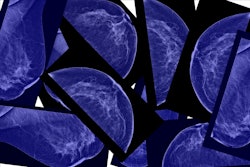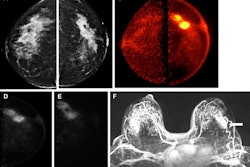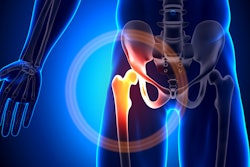Women with high body fat undergoing early breast cancer treatment may be at higher risk for vertebral fractures, despite the use of bone health drugs, according to a study published January 10 in JAMA Network Open.
In a study of patients who received aromatase inhibitors and denosumab over four years, dual-energy x-ray absorptiometry (DEXA) scans showed that high baseline fat body mass was independently associated with vertebral fractures after 18 months, wrote lead author Deborah Cosentini, MD, of the University of Brescia in Italy, and colleagues.
“These findings suggest that fat body mass may promote skeletal fragility in postmenopausal women undergoing adjuvant aromatase inhibitors, despite the protective role of denosumab,” the group noted.
Nearly 80% of early breast cancers in postmenopausal women are hormone receptor (HR)-positive, with five-year adjuvant treatment with aromatase inhibitors the gold standard therapy for these patients, the authors explained. The treatment decreases bone mineral density, however, which increases the risk of bone fracture, and thus osteoporosis medications such as denosumab are also prescribed.
Risk factors for fractures in women receiving both aromatase inhibitors and denosumab have not been explored to date, the group added.
To address this gap in knowledge, the researchers enrolled 237 women with early breast cancer who were undergoing adjuvant treatment with aromatase inhibitors and denosumab (60 mg every six months) at their hospital in Brescia from September 2014 to June 2018. Data analysis was conducted in June 2022.
The researchers analyzed DEXA scans at baseline and after 18 months of therapy, with “vertical fracture (VF) progression” defined as either new or worsening of preexisting fractures between the two time points. They also assessed FRAX scores, which use DEXA measurements to predict 10-year fracture probability.
Out of 237 patients (median age, 61 years old), 17 (4.4%) had VF progression, according to the results. A multivariable analysis showed that high percentages (above the median) of fat body mass (odds ratio [OR] = 5.41; P = .01) and high FRAX scores (OR, 3.95; P = .04) in these women were independent variables associated with VF progression.
“These data contrast with those reported for postmenopausal women, in which obesity often plays a protective role,” the authors noted.
Moreover, the study raises doubt about current bone health recommendations for these patients from the American Society of Clinical Oncology and European Society for Medical Oncology, which state that high body mass index is a low risk factor, they added.
Ultimately, however, this prospective study provides initial evidence for a connection between fracture risk and treatment with aromatase inhibitors and denosumab, they wrote.
“These data deserve further study in a validation cohort and in a patient population treated with [aromatase inhibitors] without denosumab,” the group concluded.
The full article is available here.



















